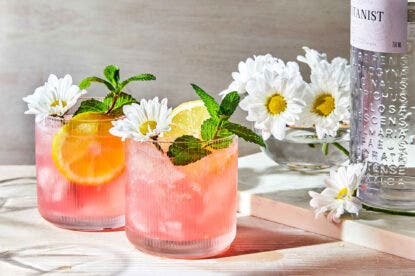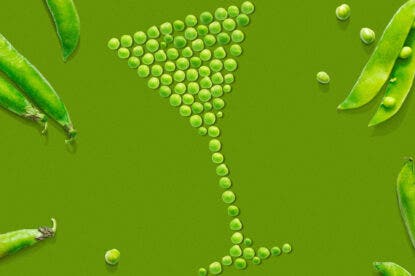In the late 1700s to 1800s, Georgia’s first colonial artillery militia created the Chatham Artillery Punch, an enduringly potent cocktail that would go on to become a defining characteristic of its home city, Savannah, Georgia.
“The city itself and that drink are synonymous,” says Paul Rabe, head bartender at the American Prohibition Museum in Savannah. “It is an icon of the city, and to not consider the military would discount not only the foundation of that drink but the tone of the city.”
Military socials were common and often widely attended events in America during the 18th and 19th centuries. The Revolutionary (1775–1783) and Civil wars (1861–1865) heavily impacted most communities across the country, and regiments created alcoholic punches to make send-offs and veteran gatherings festive.
Rabe explains there was a lack of training for most militiamen and there were high mortality rates in both wars. “You’re a young man, you’re not really expecting to see old age, so you are going to grab life and drink like there is no tomorrow,” he says.
The original Chatham Artillery Punch mixed rum, bourbon and brandy with lemon and sugar in a horse bucket full of ice for essential dilution. Then, Champagne was added.
“The Champagne actually helps lengthen the drink,” says Rabe. “It makes sense, but only to a Savannahian, that to make your drink less strong and lengthen it you would add more alcohol.”
It fits that Savannah’s Chatham Artillery lends its name to the most lasting and notorious example of these punches. The regiment were farmers and “everyday men” with wild reputations.
“Machismo in military culture is right there, front and center,” says Rabe. “That ‘our guys will be able to drink your guys under the table,’ it reverberates today. Savannah identifies as being of many things; culturally rich in its food and architecture, but also in our leisure drinking. We just know how to do it a little better than everyone else.”

But it wasn’t just Georgia’s militia who enjoyed the drink. In 1791, George Washington visited Savannah to give the Chatham Artillery two bronze cannons from British General Lord Cornwallis’s surrender at Yorktown that helped end the Revolutionary War, and the story has it that naturally, he sampled the punch.
There are several stories as to how the first president got his hands on the drink. One version says that the women associated with the Chatham Artillery prepared the punch with a sensible amount of liquor. Then, officers snuck in periodically and added whatever they had on hand.
At the bars and on food tours of Savannah, the legend grows. The cannons reportedly were fired 13 times in honor of each colony, with a toast preceding each. Washington, and assumedly the other guests, were intoxicated by the time the toasts were over.
David Wondrich, James Beard award-winning author of Punch: The Delights (and Dangers) of the Flowing Bowl, cites an 1885 article in the Augusta Chronicle as an alternate origin story. According to this article, bartender A.H. Luce created the punch for the meeting of the Chatham Artillery and a social regiment, the Republican Blues.
National fame for the punch came in the mid-1880s after journalists returned from a convention in Savannah with tales of the “insidiously strong” drink. Chatham Artillery Punch collected poetic descriptors and nicknames: vanquisher of men, killer of time, mortal enemy of despair, delicious deliriousness and the strongest drink in America.
Ingredients shifted through the 1930s as recipes added gin, Catawba wine, Benedictine, Scotch, rye whiskey and fruit.
Still today, the punch and its legacy live on.
“It lives up to its reputation,” says Rabe. “We like to say, ‘Yes, it was the vanquisher of men. But today, it’s the humbler of tourists.’”
Last Updated: September 28, 2022















